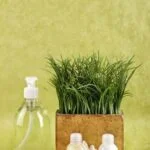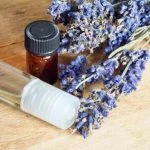Regular cleaning of your aromatherapy diffuser is essential for ensuring a fresh and effective aromatherapy experience. Over time, residue and odor build-up can occur, compromising the diffusion efficiency and potentially affecting the quality of the essential oils you use. By following a simple cleaning routine, you can maintain the optimal performance of your diffuser while keeping it looking as good as new.
When it comes to cleaning an aromatherapy diffuser, it’s important to understand its anatomy and the steps involved in disassembling it for a thorough clean. By breaking down the diffuser into its components, such as the water tank and nebulizer, you can effectively tackle any residue or clogs that may have developed over time.
Before beginning the cleaning process, gather all necessary supplies to ensure a hassle-free experience. From cleaning solutions like vinegar or soap and water to soft brushes or cotton swabs for reaching hard-to-clean areas, having everything ready will make the process more efficient.
In the following sections of this article, we’ll guide you step-by-step through the process of cleaning each component of your aromatherapy diffuser. We’ll cover topics such as removing residue and odor buildup from the water tank, unclogging the nebulizer for enhanced diffusion efficiency, and keeping the exterior of your diffuser looking brand new.
By regularly cleaning and maintaining your aromatherapy diffuser, you can extend its lifespan and continue enjoying all the benefits of this wonderful tool for relaxation and well-being. Stick with us as we dive into each step in detail so that you can master how to clean an aromatherapy diffuser effectively.
Understanding the Anatomy of an Aromatherapy Diffuser
An aromatherapy diffuser is a device designed to disperse essential oils into the air, creating a pleasant and therapeutic atmosphere. In order to properly clean and maintain your diffuser, it is important to have a clear understanding of its anatomy. By familiarizing yourself with the different parts and components, you will be able to effectively disassemble, clean, and reassemble your diffuser for optimal performance.
One of the key components of an aromatherapy diffuser is the water tank. This is where you fill the diffuser with water and essential oils before turning it on. It is important to regularly clean the water tank to remove any residue or buildup that may accumulate over time. Neglecting this step can impact the diffusion efficiency of your diffuser and lead to unpleasant odors.
Another important component of an aromatherapy diffuser is the nebulizer. This is responsible for breaking down the essential oils into tiny particles that can be dispersed into the air. Over time, the nebulizer can become clogged with oil residues, affecting its performance. Properly cleaning and unclogging the nebulizer will ensure that your diffuser continues to function effectively.
In addition to these key components, it is also important to clean the exterior of your aromatherapy diffuser regularly. Dust, dirt, and other contaminants can accumulate on the surface, affecting its appearance and potentially contaminating your essential oils. By keeping your diffuser’s exterior clean, you can ensure a hygienic and enjoyable aromatherapy experience.
| Component | Description |
|---|---|
| Water Tank | The part where you fill the diffuser with water and essential oils. |
| Nebulizer | The component responsible for breaking down essential oils into tiny particles. |
| Exterior | The surface of the diffuser that needs to be kept clean. |
By understanding the anatomy of your aromatherapy diffuser, you will have the knowledge and confidence to properly clean and maintain it. This will ensure that you can consistently enjoy a fresh and effective aromatherapy experience. In the next section, we will discuss how to gather the necessary supplies for the cleaning process.
Preparing for the Cleaning Process
Before you begin cleaning your aromatherapy diffuser, it is important to gather all the necessary supplies. Having the right tools and materials on hand will make the cleaning process much easier and more efficient. Here are some essential supplies you will need:
- Clean water: You will need a sufficient amount of clean water to rinse and clean the different components of your diffuser.
- Mild dish soap: A mild dish soap can effectively remove residue and dirt from the water tank and other parts of the diffuser.
- Vinegar: Vinegar is a natural cleaning agent that can help remove tough stains, mineral buildup, and other impurities in your diffuser.
- Cotton swabs or brushes: These tools are useful for cleaning hard-to-reach areas such as the small crevices or corners of your diffuser.
- Microfiber cloth or towel: This cloth is ideal for wiping down the exterior surface of your diffuser without leaving lint or scratches.
- Q-tips: Q-tips can be used to gently clean tiny openings or delicate parts of your diffuser.
It is important to note that not all diffusers are made equal, so you may need additional supplies depending on the specific instructions provided by the manufacturer. Be sure to read through any user manuals or guides that came with your diffuser to determine if there are any additional supplies required.
Once you have gathered all the necessary supplies, you can proceed with disassembling your aromatherapy diffuser to begin the cleaning process.
Disassembling the Aromatherapy diffuser – Breaking it Down for a Thorough Clean
To ensure a thorough clean of your aromatherapy diffuser, it is essential to disassemble the device. By breaking down the diffuser into its individual components, you can access all areas that may accumulate residue and impurities, ensuring a fresh and effective aromatherapy experience. Follow these step-by-step instructions on how to disassemble your aromatherapy diffuser:
- Power off and unplug the diffuser: Before beginning the disassembly process, make sure to turn off and unplug your aromatherapy diffuser to avoid any potential accidents.
- Remove the water tank: The water tank is where you pour water mixed with essential oils for diffusion. Carefully detach the water tank from the main unit by following the manufacturer’s instructions. It usually involves gently twisting or pulling it apart.
- Take out the nebulizer: The nebulizer is responsible for converting water and oil into a fine mist. Depending on your specific model, there might be different ways to remove the nebulizer. It can usually be twist-locked or simply lifted out of its placement.
- Detach any removable parts: Some aromatherapy diffusers may have additional removable parts, such as covers or caps. Check your user manual for specific instructions on how to remove these parts from your device.
- Separate other components: If your diffuser has any separate components like filters or sponge pads, carefully detach them as well.
By disassembling your aromatherapy diffuser, you can easily access each component and thoroughly clean them to ensure optimal performance and longevity of your device.
Cleaning the Water Tank – Removing Residue and Odor Build-up
Cleaning the water tank of your aromatherapy diffuser is an essential step in maintaining its functionality and ensuring a fresh and effective aromatherapy experience. Over time, residue from essential oils and minerals can accumulate in the water tank, leading to unpleasant odors and diminishing the performance of your diffuser. Here is a step-by-step guide on how to clean the water tank properly:
Step 1: Emptying and Disassembling
Start by turning off your diffuser and unplugging it from the power source. Carefully remove the water tank from the base of the diffuser. Hold the tank over a sink and empty any remaining water. Next, disassemble all removable parts of the water tank, such as rubber seals or caps. This will ensure a thorough cleaning process.
Step 2: Gentle Scrubbing
Using warm water and mild dish soap, gently scrub the interior of the water tank with a soft brush or sponge. Pay close attention to areas where residue may have built up, such as around the rim or at the bottom of the tank. Avoid using harsh cleaning agents or abrasive materials that could damage the surface of your diffuser.
Step 3: Removing Odor Build-up
To eliminate any lingering odors from previous uses, you can create a natural cleaning solution using equal parts white vinegar and water. Fill a container with this solution and submerge your disassembled water tank for about 15-20 minutes. The vinegar will help break down any stubborn residue or odor build-up.
Step 4: Rinsing and Drying
After soaking, rinse all parts of the water tank thoroughly with clean water to remove any vinegar residue. Be sure to rinse until no trace of vinegar smell remains. Once rinsed, use a clean towel or cloth to dry each part of the water tank completely. It is important to ensure that the water tank is completely dry before reassembling it to prevent the growth of mold or bacteria.
By following these step-by-step instructions for cleaning the water tank of your aromatherapy diffuser, you can maintain its performance and prolong its lifespan while enjoying a fresh and effective aromatherapy experience. Remember to clean your diffuser regularly to prevent residue and odors from building up, and always refer to the manufacturer’s instructions for specific cleaning guidelines.
Unclogging the Nebulizer – Enhancing Diffusion Efficiency
Understanding the Nebulizer
The nebulizer is an important component of an aromatherapy diffuser that helps in breaking down essential oils into smaller particles for effective diffusion. Over time, the nebulizer can become clogged with oil residue and impurities, resulting in reduced diffusion efficiency. Unclogging the nebulizer is essential to maintain optimal performance and ensure a consistent aroma output from your diffuser.
Gathering Supplies for Unclogging
Before proceeding with unclogging the nebulizer, it is important to gather all the necessary supplies. This includes a small bowl or container, clean water, rubbing alcohol or vinegar, a small brush or cotton swabs, and a soft cloth. Rubbing alcohol or vinegar work well as cleaning agents due to their ability to dissolve oil and remove buildup.
The Unclogging Process
To start unclogging the nebulizer, begin by unplugging the diffuser from the power source and removing any remaining water or oil from the water tank. Next, carefully remove the lid or cover of the nebulizer unit. This will expose the nozzle or tube through which oil is sprayed for diffusion.
Using a small brush or cotton swab dipped in rubbing alcohol or vinegar, gently scrub away any buildup on the nozzle or tube. Be sure to reach all areas and remove any clogs that may hinder proper diffusion. Once you have thoroughly cleaned these parts, rinse them with clean water to remove any residues of cleaning agents.
After cleaning and rinsing, dry these components using a soft cloth and ensure there is no moisture left behind before reassembling your diffuser. It is important to note that different diffusers may have slightly different designs for their nebulizers, so always refer to your specific device’s manual for detailed instructions on how to properly clean and unclog it.
By regularly cleaning and unclogging the nebulizer, you can enhance the diffusion efficiency of your aromatherapy diffuser, ensuring a more effective and consistent aroma output.
Cleaning the Exterior – Keeping Your Diffuser Looking as Good as New
Keeping the exterior of your aromatherapy diffuser clean is just as important as cleaning the internal components. Not only does it help maintain the overall appearance of your diffuser, but it also ensures that no dust or dirt particles interfere with its functionality. In this section, we will discuss some effective methods to clean the exterior of your diffuser and keep it looking as good as new.
Regular Dusting
To keep your diffuser free from dust and debris, it is essential to regularly dust the exterior. You can use a soft microfiber cloth to gently wipe away any dust that may have accumulated on the surface. Avoid using abrasive materials or harsh cleaners, as they can damage the delicate finish of the diffuser.
Cleaning with Mild Detergent
If your diffuser has stubborn stains or dirt marks, you can clean it using a mild detergent. Begin by diluting a small amount of mild dish soap in warm water. Then, dip a soft cloth or sponge into the soapy solution and gently wipe down the exterior surfaces of your diffuser. Be sure to wring out any excess moisture from the cloth or sponge before wiping to prevent water from entering the electrical components.
Drying and Polishing
After cleaning with detergent, ensure that you thoroughly dry off your diffuser before reassembling it or turning it on. Use a clean, dry cloth to remove any remaining moisture. Once dry, you can polish the exterior of your diffuser with a microfiber cloth to restore its shine and give it a polished look.
Remember to refer to the manufacturer’s instructions for specific cleaning recommendations for your particular model of aromatherapy diffuser. By keeping up with regular maintenance and cleaning routines for both the interior and exterior parts of your diffuser, you can enjoy its fresh scents and benefits for years to come while ensuring its longevity and efficiency.
Deep Cleaning Techniques
When it comes to deep cleaning your aromatherapy diffuser, there are a few techniques you can use to ensure a thorough and effective clean. Two popular methods are using vinegar or water and soap. Both approaches have their advantages and disadvantages, so it’s important to consider which option is best for you based on your diffuser’s materials and personal preferences.
Vinegar is a natural cleaning agent that can effectively break down residue and remove odors from your diffuser. It has antimicrobial properties that can help disinfect the unit, making it a great choice for eliminating any bacteria or mold that may be present.
To clean with vinegar, simply fill the water tank halfway with equal parts white vinegar and water, then run the diffuser for about 10-15 minutes. Afterward, empty the tank and use a cotton swab or soft brush to gently scrub away any remaining residue.
On the other hand, some people prefer using water and soap to clean their aromatherapy diffusers. This method may be more suitable for diffusers made of certain materials that could be damaged by vinegar or for individuals who dislike the smell of vinegar.
To clean with water and soap, disassemble your diffuser as outlined in the previous section, then wash each component with mild dish soap and warm water. Use a soft cloth or brush to scrub away any buildup before rinsing thoroughly and allowing all parts to dry completely before reassembly.
It’s worth noting that not all aromatherapy diffusers are compatible with vinegar or soap cleaning methods. Be sure to refer to your specific device’s instructions manual or contact the manufacturer for guidance on the best cleaning approach. Additionally, no matter which cleaning method you choose, always unplug your diffuser before starting the cleaning process to ensure safety.
Drying and Reassembling the Aromatherapy Diffuser
Once you have thoroughly cleaned all the components of your aromatherapy diffuser, it’s important to ensure that they are completely dry before reassembling the device. Moisture can promote the growth of mold and bacteria, which can affect not only the performance of your diffuser but also your health.
To properly dry your aromatherapy diffuser, start by using a clean and dry cloth or towel to wipe down each component. Pay extra attention to any areas where water may be trapped, such as crevices or small openings. This will help remove any residual moisture from the cleaning process.
Next, set each component aside in a well-ventilated area to air dry completely. It is important to let them dry naturally rather than using heat sources like hairdryers or towels, as these can damage the components or cause warping.
After each component has dried completely, carefully reassemble the aromatherapy diffuser according to the manufacturer’s instructions. Take care to align each part correctly and securely so that it functions properly when in use.
To ensure maximum efficiency and longevity of your aromatherapy diffuser, it is recommended to clean and dry it after every use. Regular maintenance will prevent build-up of residue and keep your diffuser operating at its best.
| Component | Drying Method |
|---|---|
| Water tank | Air drying in a well-ventilated area |
| Nebulizer | Air drying in a well-ventilated area |
| Cover/lid | Air drying in a well-ventilated area |
| Base | Air drying in a well-ventilated area |
Maintenance Tips and Tricks
Regular maintenance and proper care are crucial for extending the lifespan of your aromatherapy diffuser. By following a few simple tips and tricks, you can ensure that your diffuser continues to function effectively for years to come.
- Use filtered or distilled water: The quality of water you use in your diffuser can significantly impact its lifespan. Tap water often contains minerals and impurities that can build up over time and clog the diffuser’s components. To avoid this, try using filtered or distilled water instead.
- Clean it regularly: As mentioned earlier in the article, regular cleaning is essential for keeping your aromatherapy diffuser in optimal condition. Follow the recommended cleaning routine provided by the manufacturer, or clean it at least once a week if there are no specific instructions. Regular cleaning prevents residue buildup and helps maintain the efficient operation of the diffuser.
- Handle with care: Aromatherapy diffusers are delicate instruments that require gentle handling. Avoid dropping or mishandling them, as this can lead to internal damage or breakage. Place them on a stable surface away from edges where they are less likely to be knocked over accidentally.
- Store properly when not in use: When you’re not using your diffuser, it’s important to store it correctly to protect it from dust and potential damage. Replace the cover or cap securely on the water tank to prevent dust from settling inside. Additionally, keep it out of direct sunlight and humid environments, as these conditions can impact its performance.
- Replace parts when needed: Any mechanical device will have parts that wear out over time, and your aromatherapy diffuser is no exception. If you notice any parts becoming worn or not functioning properly, consult the manufacturer’s recommendations for replacement parts or contact their customer service for assistance.
By implementing these maintenance tips and tricks into your routine, you’ll be able to enjoy years of fresh and effective aromatherapy experiences with your clean diffuser. Taking the time to care for your diffuser ensures its longevity and allows you to continue benefiting from the therapeutic effects of essential oils.
Precautions and Safety Measures
When it comes to cleaning your aromatherapy diffuser, it is important to take certain precautions and follow safety measures to ensure a safe and effective cleaning experience. Here are some key tips to keep in mind:
- Unplug the diffuser: Before you begin the cleaning process, always make sure that your aromatherapy diffuser is unplugged from the power source. This will prevent any risk of electric shock or damage during the cleaning process.
- Handle with care: Aromatherapy diffusers may have delicate parts such as glass components or fragile nebulizers. It is crucial to handle these parts with care to avoid any breakage or damage. Use gentle movements when disassembling or reassembling the diffuser, and be mindful of how you clean each part.
- Avoid using harsh chemicals: While it may be tempting to use strong cleaning agents, it is important to avoid using harsh chemicals on your aromatherapy diffuser. These can damage the materials and affect its performance. Stick to mild dish soap or vinegar for deep cleaning, as mentioned in the previous section.
- Keep water away from electronic components: When cleaning your diffuser, be cautious not to let any water come into contact with electronic parts or circuitry. Moisture can cause damage and lead to malfunctioning of the device. Take extra care when rinsing or wiping down the exterior of the diffuser.
- Follow manufacturer’s instructions: Each aromatherapy diffuser may have specific guidelines for cleaning and maintenance provided by the manufacturer. It’s essential to read and follow these instructions carefully to ensure that you clean your diffuser safely and in a way that preserves its functionality.
By taking these precautions and following safety measures, you can ensure a safe cleaning experience for your aromatherapy diffuser while extending its lifespan and enjoying a fresh and effective aromatherapy experience.
Conclusion
In conclusion, regularly cleaning your aromatherapy diffuser is essential for maintaining its effectiveness and ensuring a fresh aromatherapy experience. By understanding the anatomy of your diffuser and following a step-by-step guide, you can easily disassemble and clean each component thoroughly. Remember to gather the necessary supplies before beginning the cleaning process to make the task more efficient.
Cleaning the water tank is crucial for removing residue and odor build-up. Regularly unclogging the nebulizer will enhance diffusion efficiency, allowing the aroma to spread evenly throughout your space. Additionally, don’t forget to clean the exterior of your diffuser to keep it looking as good as new.
When it comes to deep cleaning techniques, you have options such as using vinegar or water and soap. Both methods are effective in removing stubborn stains and buildup; however, be sure to follow proper instructions and precautions when using vinegar. Once you have cleaned each component, carefully dry and reassemble your aromatherapy diffuser.
To extend the lifespan of your diffuser, it is important to implement maintenance tips and tricks. This may include regular cleaning, using filtered water, and avoiding excessive use of essential oils. By taking these preventive measures, you can enjoy your fragrant aromatherapy experience for a longer period.
Lastly, remember to prioritize safety while cleaning your diffuser. Follow safety measures such as unplugging the device before cleaning it and avoiding contact with electrical parts when handling water or cleaning solutions.
Frequently Asked Questions
Do essential oil diffusers need to be cleaned?
Yes, essential oil diffusers do need to be cleaned regularly. Over time, residue from the oils can build up in the diffuser, which may affect its performance and even lead to mold or bacteria growth if not properly cleaned. Regular cleaning helps ensure that the diffuser continues to work effectively and provides a safe environment for use.
What is the easiest way to clean a diffuser?
The easiest way to clean a diffuser is by using water and mild soap. Start by unplugging the diffuser and emptying any remaining water and oil from the reservoir. Rinse out the reservoir with clean water to remove any residual oil.
Then, add a small amount of mild soap to some water and dip a clean cloth or sponge into the soapy mixture. Gently wipe down the inside of the reservoir, as well as any other removable parts like the lid or mist nozzle. Rinse everything thoroughly with clean water and dry with a soft cloth before reassembling.
How do you clean an essential oil diffuser without vinegar?
If you prefer not to use vinegar, there are alternative methods for cleaning an essential oil diffuser. One option is to use rubbing alcohol or isopropyl alcohol diluted with equal parts water.
Follow a similar process as described for using soap; simply dampen a cloth or sponge with the alcohol mixture and wipe down the inside of the reservoir and other parts of the diffuser before rinsing everything thoroughly with clean water.

Are you looking for a natural way to improve your health and wellbeing?
If so, aromatherapy may be the answer for you.





